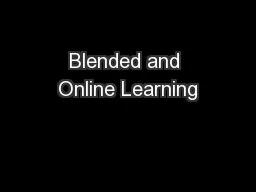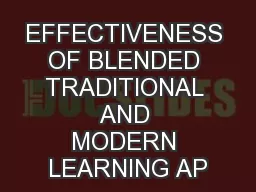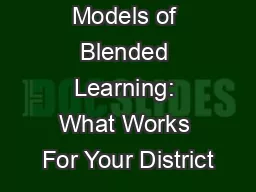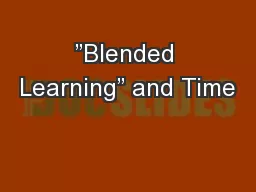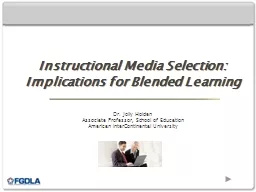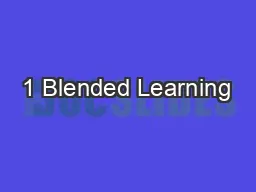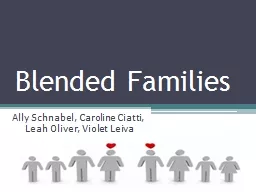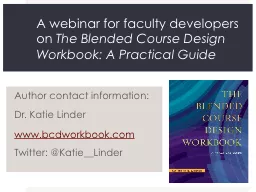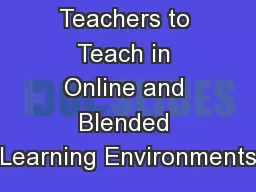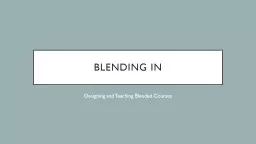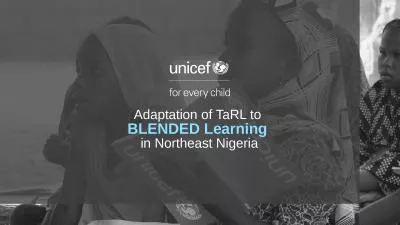PPT-Blended and Online Learning
Author : kittie-lecroy | Published Date : 2016-09-11
Carleton NFO August 2015 Before we start When you hear the terms blended andor hybrid course what comes to your mind In other words how would you define blended
Presentation Embed Code
Download Presentation
Download Presentation The PPT/PDF document "Blended and Online Learning" is the property of its rightful owner. Permission is granted to download and print the materials on this website for personal, non-commercial use only, and to display it on your personal computer provided you do not modify the materials and that you retain all copyright notices contained in the materials. By downloading content from our website, you accept the terms of this agreement.
Blended and Online Learning: Transcript
Download Rules Of Document
"Blended and Online Learning"The content belongs to its owner. You may download and print it for personal use, without modification, and keep all copyright notices. By downloading, you agree to these terms.
Related Documents

